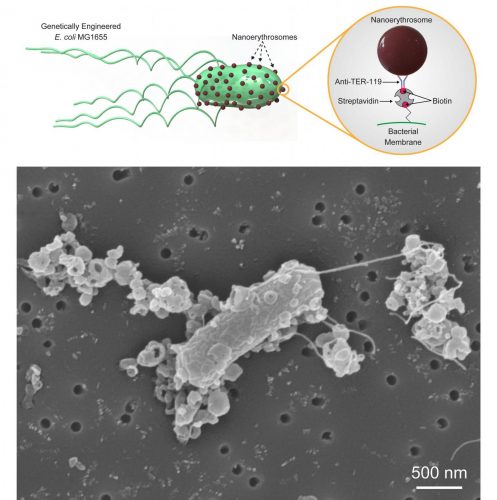Micro biohybrid robots hold potential for drug delivery, say researchers
Posted: 15 April 2020 | Victoria Rees (European Pharmaceutical Review) | No comments yet
Researchers have developed a novel microrobot made from bacteria and red blood cells which they say could be an effective form of drug delivery.


New research has shown that tiny biohybrid robots on the micrometer scale can be fabricated by combining a genetically engineered E. coli MG1655 substrain and nanoerythrosomes, small structures made from red blood cells. The microrobots can swim through the body and deliver drugs to tumours or provide other cargo-carrying functions.
According to the researchers, from the American Institute of Physics, the natural environmental sensing tendencies of bacteria mean they can navigate toward certain chemicals or be remotely controlled using magnetic or sound signals.
Nanoerythrosomes are nanovesicles derived from red blood cells by emptying the cells, keeping the membranes and filtering them down to nanoscale size. These tiny red blood cell carriers attach to the bacterial membrane using the powerful noncovalent biological bond between biotin and streptavidin. This process preserves two important red blood cell membrane proteins: TER119 is needed to attach the nanoerythrosomes and CD47 to prevent macrophage uptake.
The E. coli MG 1655 serves as a bioactuator performing the mechanical work of propelling through the body as a molecular engine using flagellar rotation. The swimming capabilities of the bacteria were assessed using a custom-built two-dimensional (2D) object-tracking algorithm and videos taken as raw data to document their performance.


Illustration (top) and scanning electron microscopy image (bottom) of biohybrid bacterial microswimmers, which were fabricated by combining genetically engineered E. coli MG1655 and nanoerythrosomes made from red blood cells. A biotin-streptavidin interaction was used to attach nanoerythrosomes to the bacterial membrane [credit: Image courtesy of the researchers].
Biohybrid microswimmers with bacteria carrying red blood cell nanoerythrosomes performed at speeds 40 percent faster than other E. coli-powered microparticle-based biohybrid microswimmers. The researchers say that the work demonstrated a reduced immune response due to the nanoscale size of the nanoerythrosomes.
The team plans to continue their work to further fine-tune the immune clearance of the microrobots and investigate how they might penetrate cells and release their cargo in the tumour microenvironment.
“This work is an important stepping stone in our overarching goal of developing and deploying biohybrid microrobots for therapeutic cargo delivery,” author Metin Sitti said. “If you decrease the size of red blood cells to nanoscale and functionalise the body of the bacteria, you could obtain additional superior properties that will be crucial in the translation of the medical microrobotics to clinics.”
The study was published in APL Bioengineering.
Related topics
Drug Delivery Systems, Drug Development, Microbiology, Research & Development (R&D)









